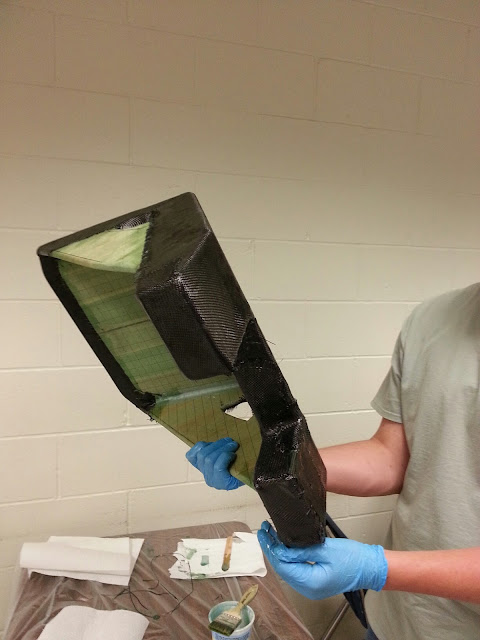Sunday, March 31, 2013
Saturday, March 30, 2013
Thursday, March 28, 2013
Tuesday, March 26, 2013
Monday, March 25, 2013
Sunday, March 24, 2013
Moonbuggy Timelapse
This time lapse was made by one of the Senior students working on the project at AACT. You can see the "team" is quite big and working hard!
Moonbuggy Project Objectives
Building off the sucess of last year's Moonbuggy, the team's focus for 2013 is to: create a lighter Moonbuggy.
The challenge of the Moon buggy competition is to deliver a two-person, human-powered buggy, and to achieve the fastest vehicle assembly and race times, while avoiding penalties on a gruleing course--slightly more than a half mile of rock, gravel, sand and other materials which simulate the harsh lunar surface. Top prizes are awarded to the three teams in each division that finish fastest, with the fewest penalties.
The challenge of the Moon buggy competition is to deliver a two-person, human-powered buggy, and to achieve the fastest vehicle assembly and race times, while avoiding penalties on a gruleing course--slightly more than a half mile of rock, gravel, sand and other materials which simulate the harsh lunar surface. Top prizes are awarded to the three teams in each division that finish fastest, with the fewest penalties.
The NASA Great Moonbuggy Race
 |
| Working on what will eventually be one of the carbon fiber seats. |
 |
| Half of the 2013 frame. |
 |
| Checking out the 2012 Moonbuggy and figuring out how to improve on it. |
Three SolidWorks drawings of the 2013 design.
 |
| Training for 2013 using the 2012 moon buggy. |
 |
| Mr. Clark teaching students how to build up wheels for the 2013 'buggy. |
 |
| Some outdoor sprint practice. |
 |
| The 2013 team heading to Alabama in late April for the race. |
 |
| Add caption |
Friday, March 22, 2013
Monday, March 18, 2013
The AACT Moonbuggy Backstory

The Academy of Arts Careers and Technology team achived great success in the past two years of the Moonbuggy race. In 2011 we won the Rookie team award placing 11th the competition. In 2012, the team came in 7th overall and won the "Featherweight award".
The annual NASA Great Moonbuggy Race is held at the U.S. Space and Rocket center in Hunstville, Ala. More than 90 Student teams -- most of them seasoned "Space Racers" from schools that field competetors year after year-- will demonstrait the same engeneering skills and innovation that made NASA's Apollo-era lunar rover program a sucess four decades ago.
The event challenges high school,college, and university students to design, build and race light weight, human powered rovers-- "Moonbuggies"-- which address challenges much like those faced by NASA's lunar rover developers in the late 1960's. The competition is designed to teach to troubleshoot and solve problems, and demonstrates NASA's continuing commitment to inspire new generations of scientists, engineers and astronauts.
The race honors the legacy of the first NASA Lunar Roving Vehicle, which made its inaugural excursion on the moon's surface July 31, 1971, driven by Apollo 15 astronauts David Scott and James Irwin. Two more rovers follwed in 1972, enabling still greater scifentific exploration during the Apollo 15 and Apollo 16 missions. (From the NASA Great Moonbuggy Race fact sheet.)
Thursday, March 7, 2013
Building On Our 2012 Success - The New Chapter
After a successful campaign in 2012 the AACT Moonbuggy crew prepares to improve on its 7th place finish against both high school and university teams, featherweight prize, and ....
New innovations are planned for the new buggy including a bit of carbon fiber showing up, a new hinge mechanism, and a lighter frame holding everything together.
Subscribe to:
Comments (Atom)


































